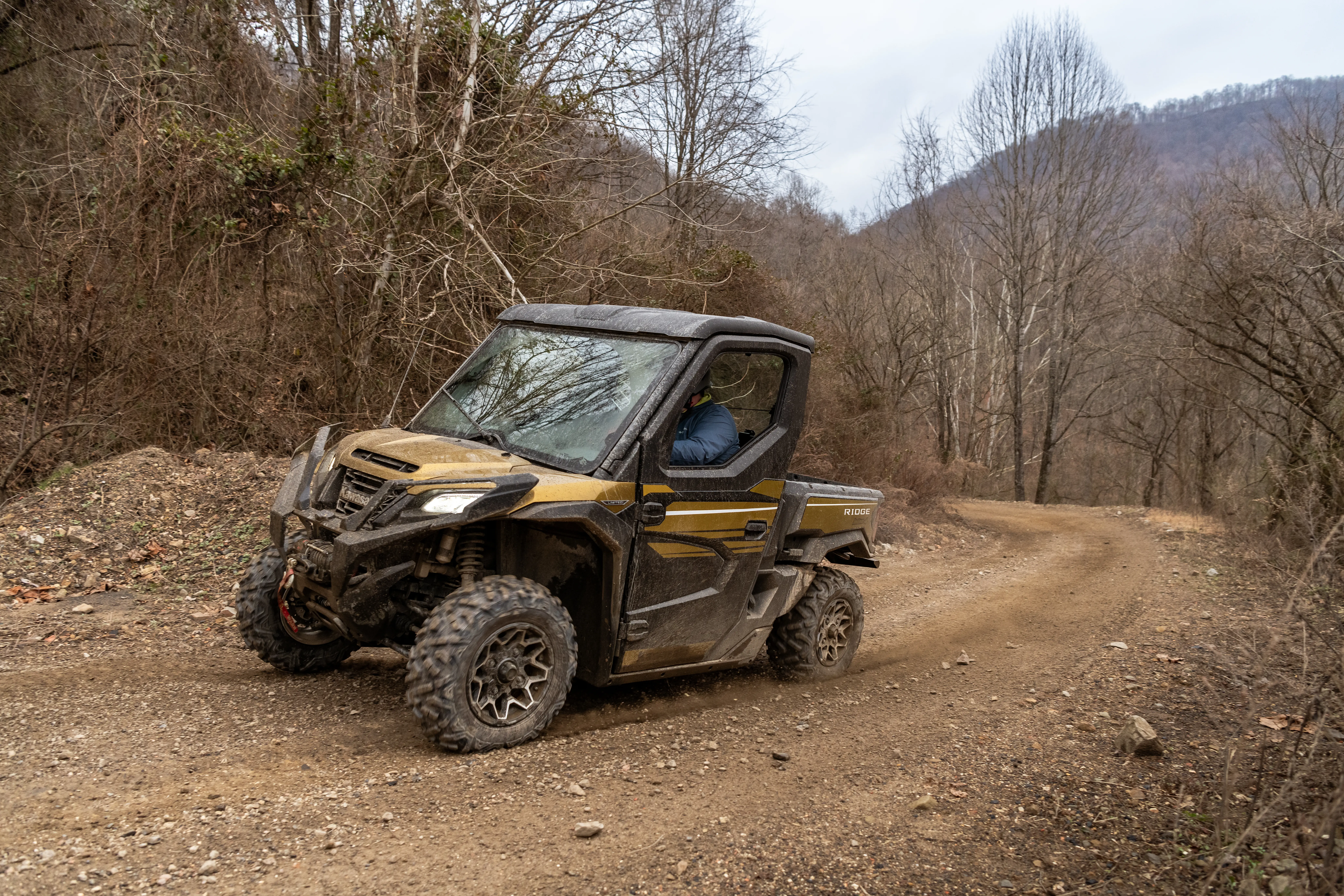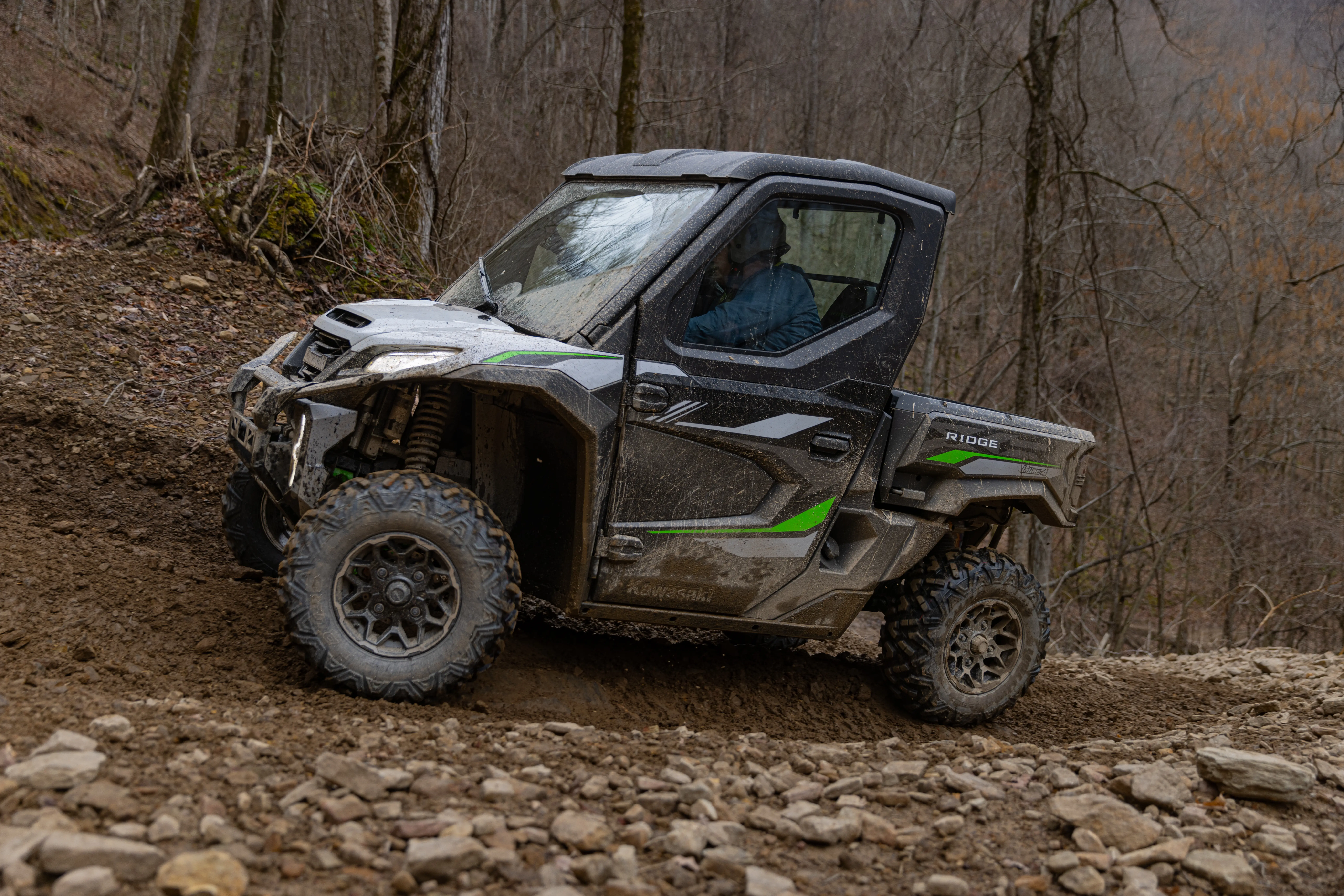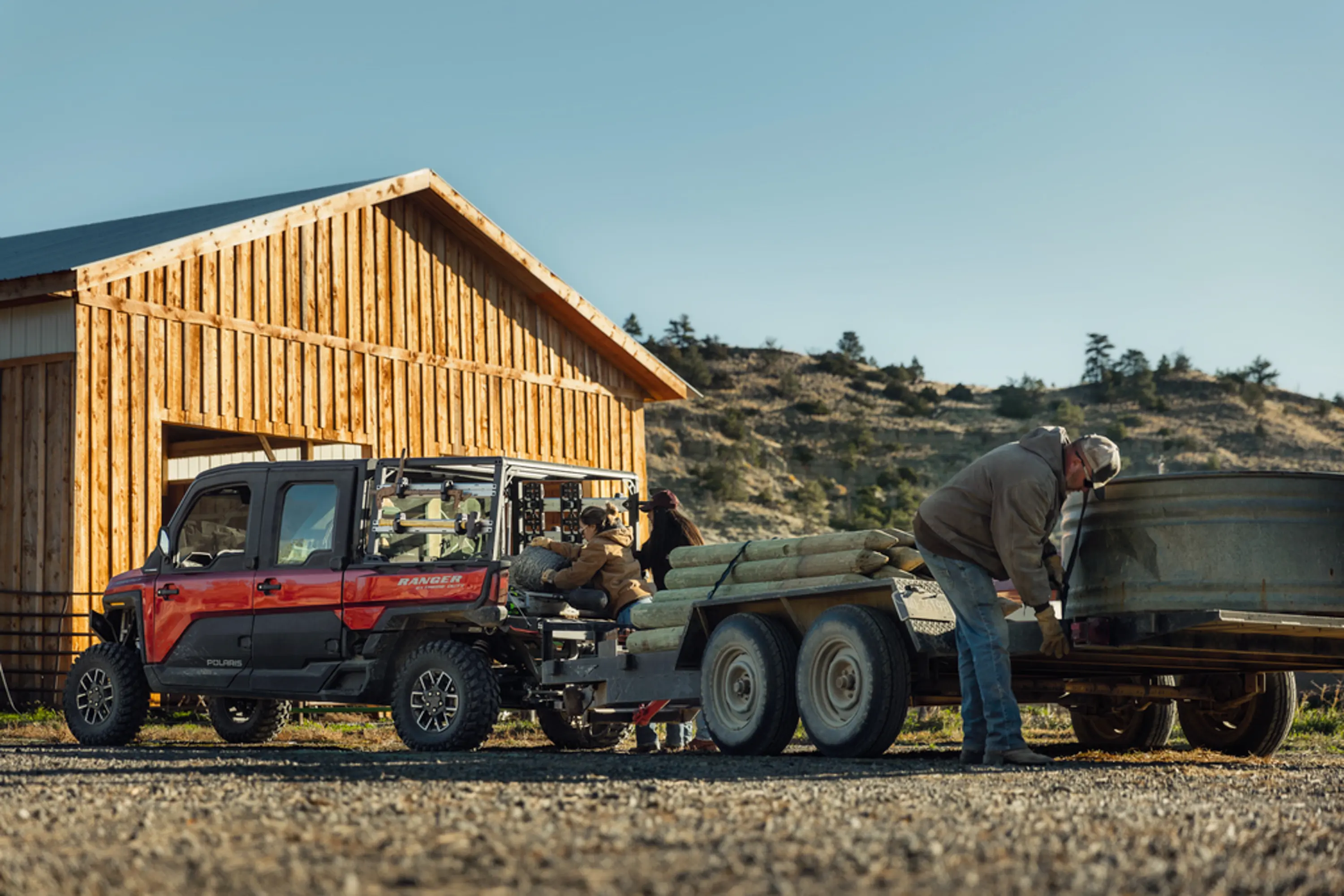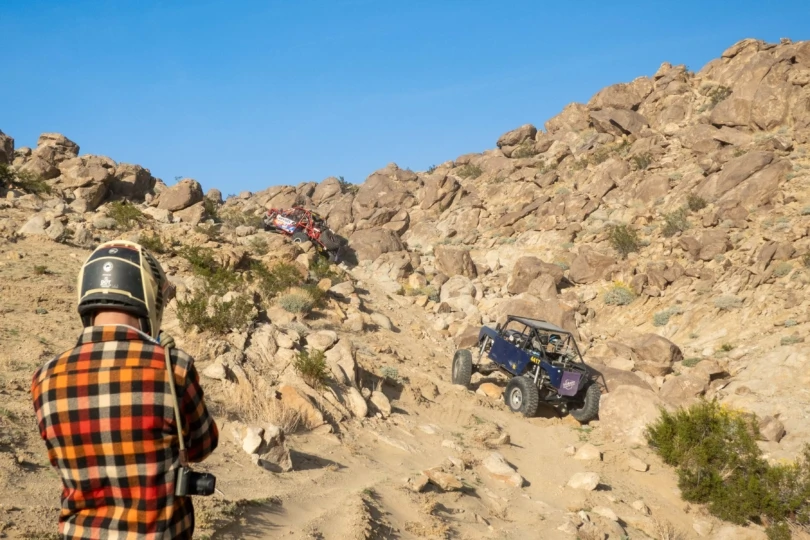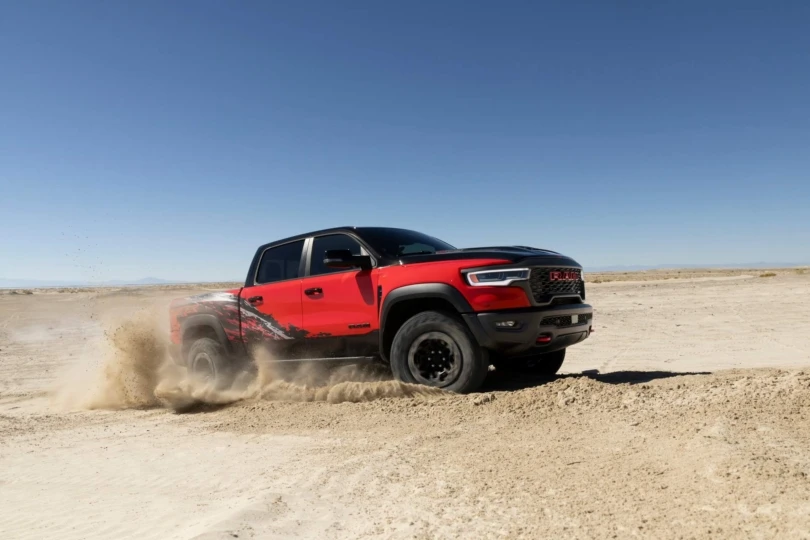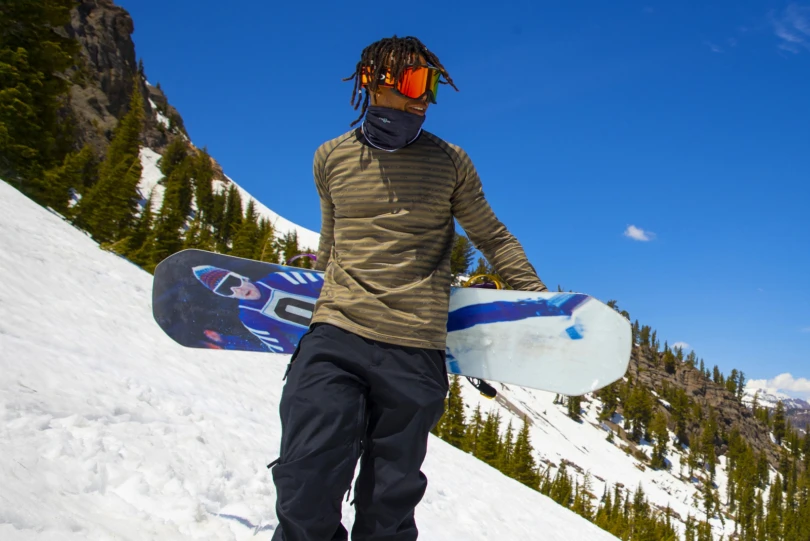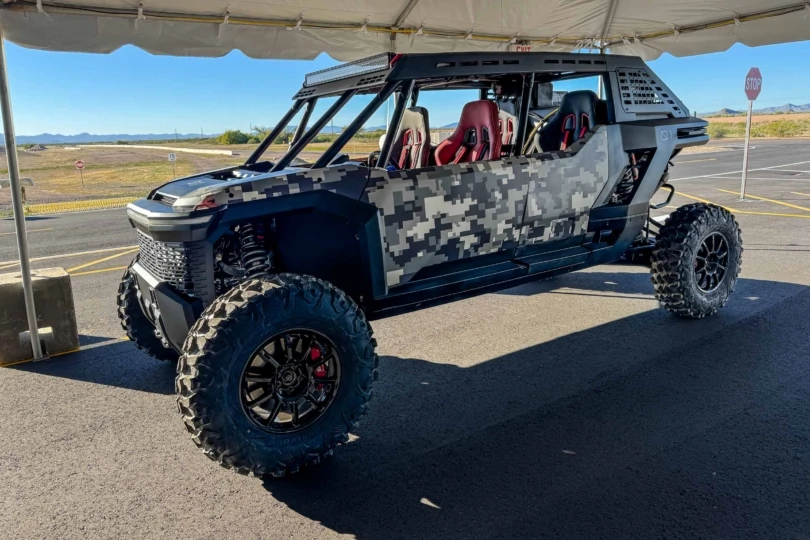I was expecting the Kawasaki Ridge to make the divide between UTV and truck smaller than ever. Instead, it just made the differences between a roadgoing truck and off-road vehicles even more apparent. That doesn’t make it a disappointment; just a reminder that you need to check out a new model before getting too excited by the marketing.
I spent the day with the 2024 Kawasaki Ridge on West Virginia’s Hatfield-McCoy trail network. Just an hour from the state’s capital, the coal country trail network has over 1,000 miles of routes and 10 trailheads. Multiple trails mean many types of terrain, with different rocks and a range of surfaces from ice to mud to dust.
Add temperatures climbing and falling like the hills, and it was an ideal place to put the work and play Ridge through its paces. Plus, a good time to quiz Kawasaki’s assembled engineers on the company’s latest product.
In short: The 2024 Kawasaki Ridge offers a workhorse for those who want their saddles to be a little more fancy. But an awkward driving position and a noisy cab keep it from being as comfortable as it could be or as fun on the weekend as promised.
- Displacement: 999 cc
- Engine: Inline four-cylinder
- Drivetrain: 2/4WD, Lockable rear differential. Lockable front and rear on XR
- Front suspension: Non-branded, 12.7" travel
- Rear suspension: Non-branded, 12.7" travel
- Brakes: Dual hydraulic discs, twin-piston calipers front, single piston rear
- Wheelbase: 90.7"
- Towing capacity: 2,500 lbs.
- Cargo bed capacity: 1,000 lbs.
- Ground clearance: 13" average (14" XR)
- Dry weight: 1,808 lbs. (Ridge HVAC) (1,960 lbs. Ridge XR)
- Fuel capacity: 12.9 gals.
Pros
- Smooth engine
- Well-sealed cab
- Truck-like interior design
- Clear digital dash
- Excellent stability
Cons
- Bodywork squeaks
- Cabin noise
- Quirky engine braking
- Start-off lurching
- Cramped cabin
2024 Kawasaki Ridge Review
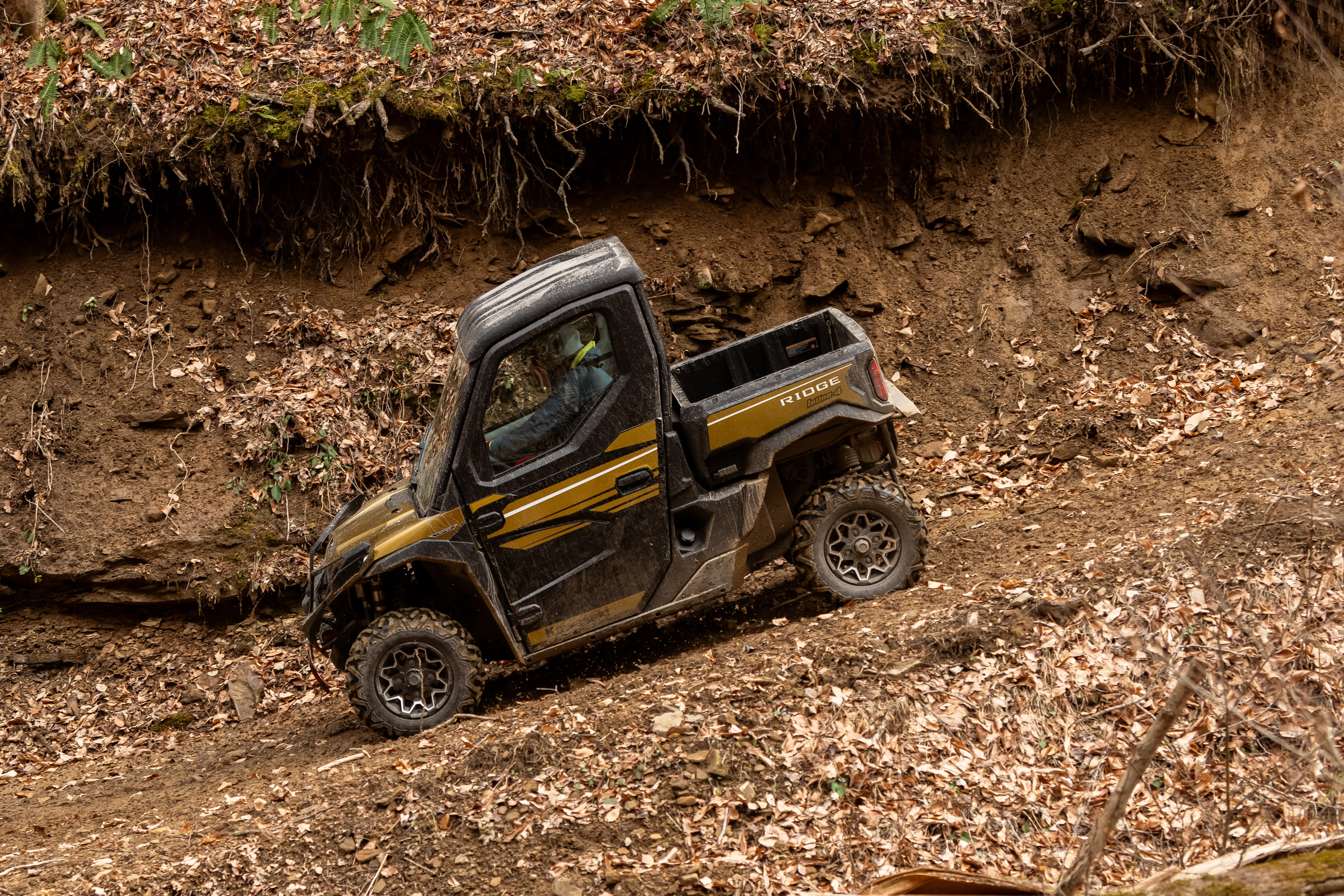
New Product Line: Luxury Utility Side-by-Side
The 2024 Ridge is a new expansion of Kawasaki’s UTV lineup. Neither Mule nor Teryx, it is instead positioned as a sort of in-between — an in-between that is also meant to be a more luxurious experience than either. That’s achieved by what the company calls “automotive-like fit and finish,” meaning contrast stitching, power windows, a dome light, and a fully glass-enclosed cab.
Double the Pistons, Half the Vibration
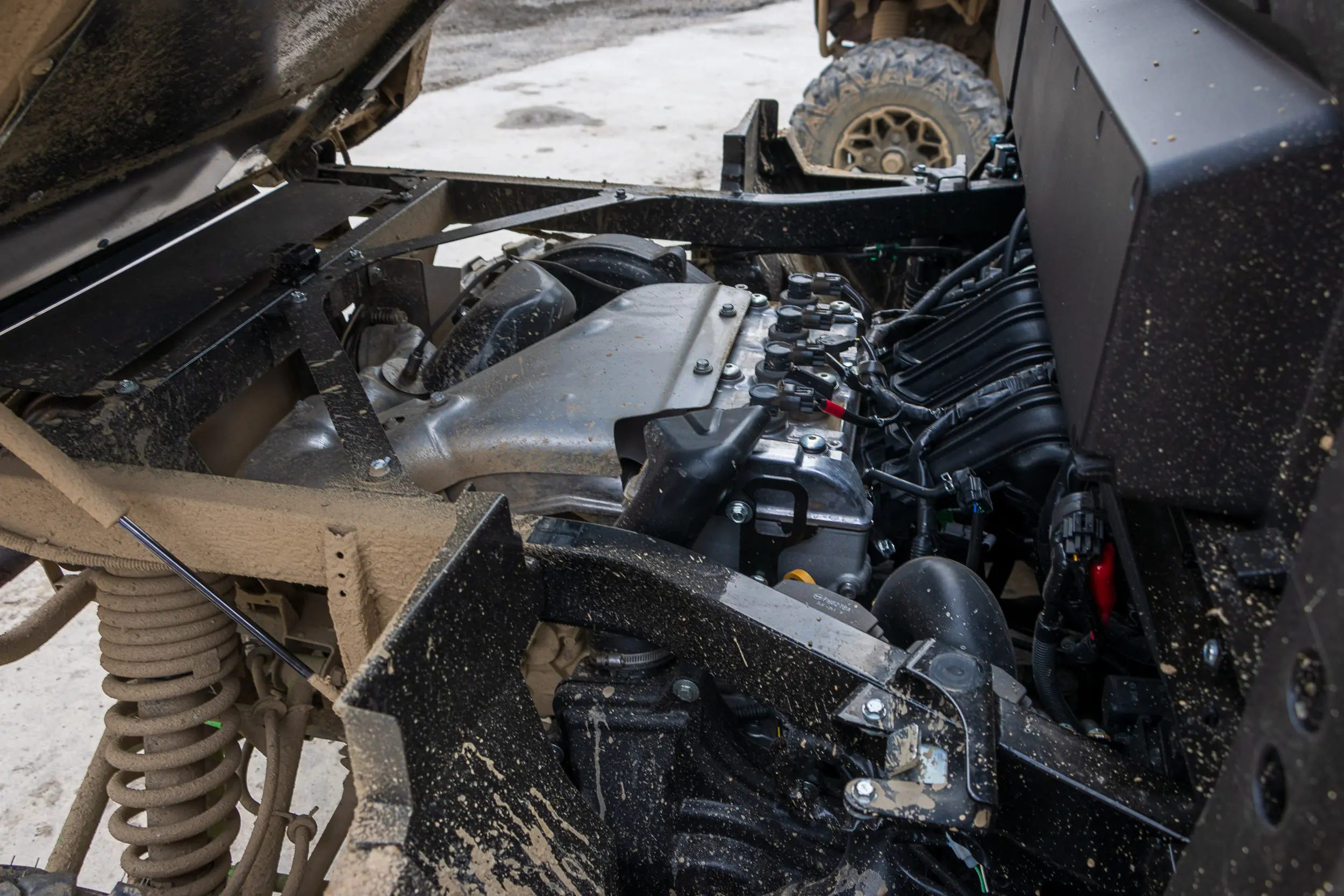
The Ridge is meant to be more refined, and to help meet that target, Kawasaki has given it a four-cylinder engine. The 999cc inline-four is one of just two four-pots in the entire UTV world. The other is the big-power 2.0L engine in the absolutely not comparable extreme Polaris RZR Pro R.
It’s an odd choice, but this is a company that has more than enough experience building four-cylinders. Those engines are just normally bound for two-wheelers instead of four.
Despite the heritage, this is a brand-new engine design. The main benefit of the four is refinement. Four cylinders smooth the impacts of combustion by having four explosions per full cycle instead of two. It means smaller bangs with less space in between. It’s why luxury sedans often have more cylinders than their high-performance counterparts.
Kawasaki’s four is wonderfully smooth. There’s no mirror hum and no bodywork shaking, even at high rpm. It revs smoothly, eagerly, and quickly. Power delivery is strong thanks to the 92 horsepower and 65 pound-feet of torque in the standard Ridge. It’s even better with the 116 horses and 73 pound-feet in the sportier XR trim.
The 2024 Ridge XR delivers its extra power with more aggression. Or at least with snappier throttle response. Both models get Work, Normal, and Sport modes. But, the electronic throttle is noticeably quicker acting in Sport on the XR than on the Limited models I piloted. The four-cylinder also sounds unlike anything else on the trail, and it’s the only UTV exhaust sound I’ve ever enjoyed.
Locked and Ready to Be Loaded
Kawasaki’s CVT doesn’t have a centrifugal clutch. To compensate for that, the company said it tweaked the ECU and throttle settings. I found the engine braking strong at speeds above about 10 mph, but it disappeared below about 5 mph.
I also had engine braking cut out a few times at higher speeds. The clutch would also lurch from a start like a new driver on a stick shift, though it wasn’t annoying after the first few starts.
4×4 is included on both models, along with a locking rear differential. The XR comes with a front locker too, while the non-XR models don’t. If the extra power isn’t enough to push you to the XR, that small detail might be.
Ridge Engine Placement Helps Refinement
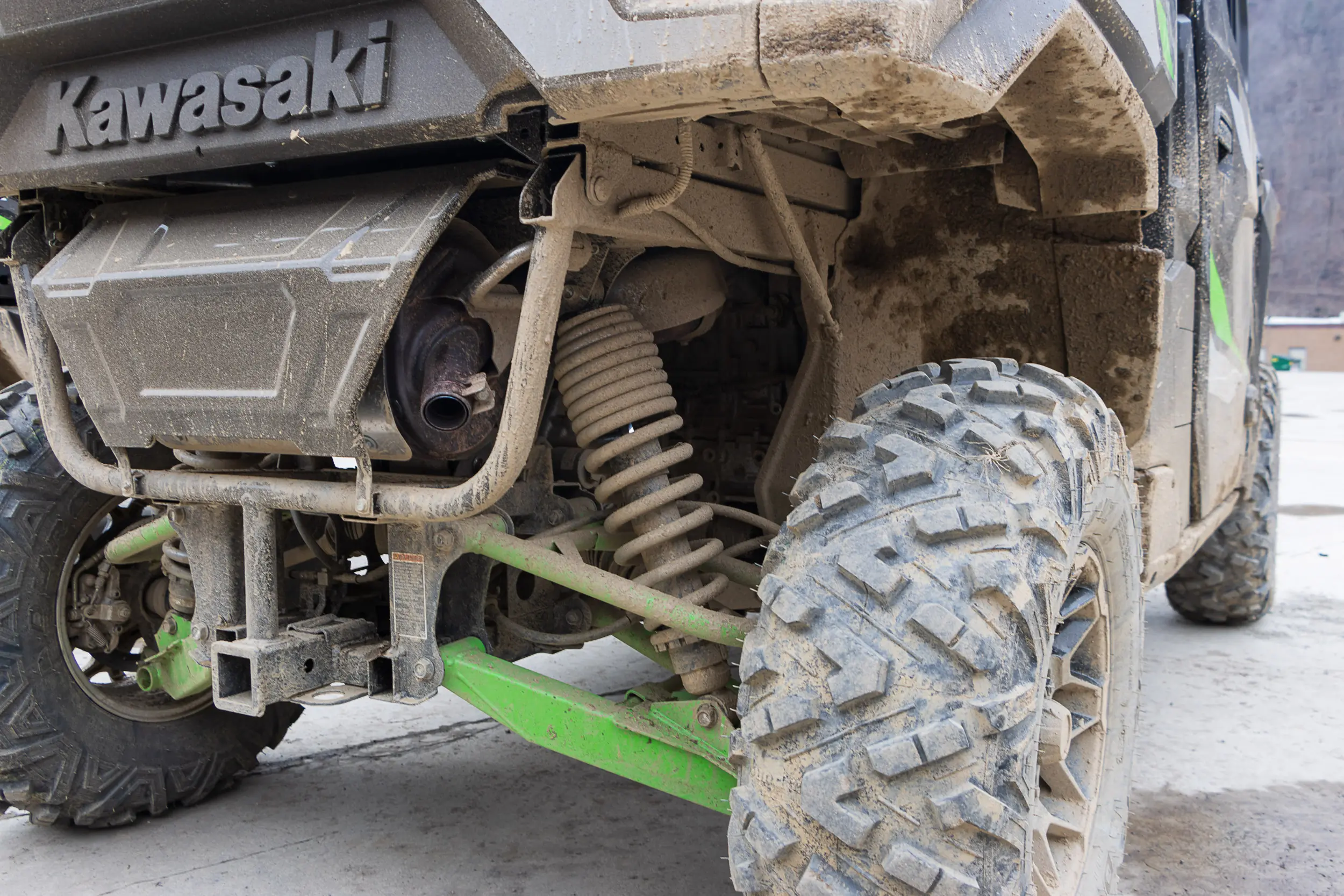



Engine placement is clever, too. The intake, which pulls clean air from ahead of the rider, is on the cab side of the engine. The exhaust manifold points off the back.
Pointing the exhaust rearward should help keep the cab cool. At least, that’s what Kawasaki said. A double-wall heat shield should help insulate the cabin from exhaust heat even further, and the cooling fan pulls air out instead of sucking it in across the engine. The goal here is to get the heat away from you and not just to get it away from the power plant. That also lets the A/C system do a better job of cooling the cabin while not getting overworked.
High-Tech Inside, Including New App
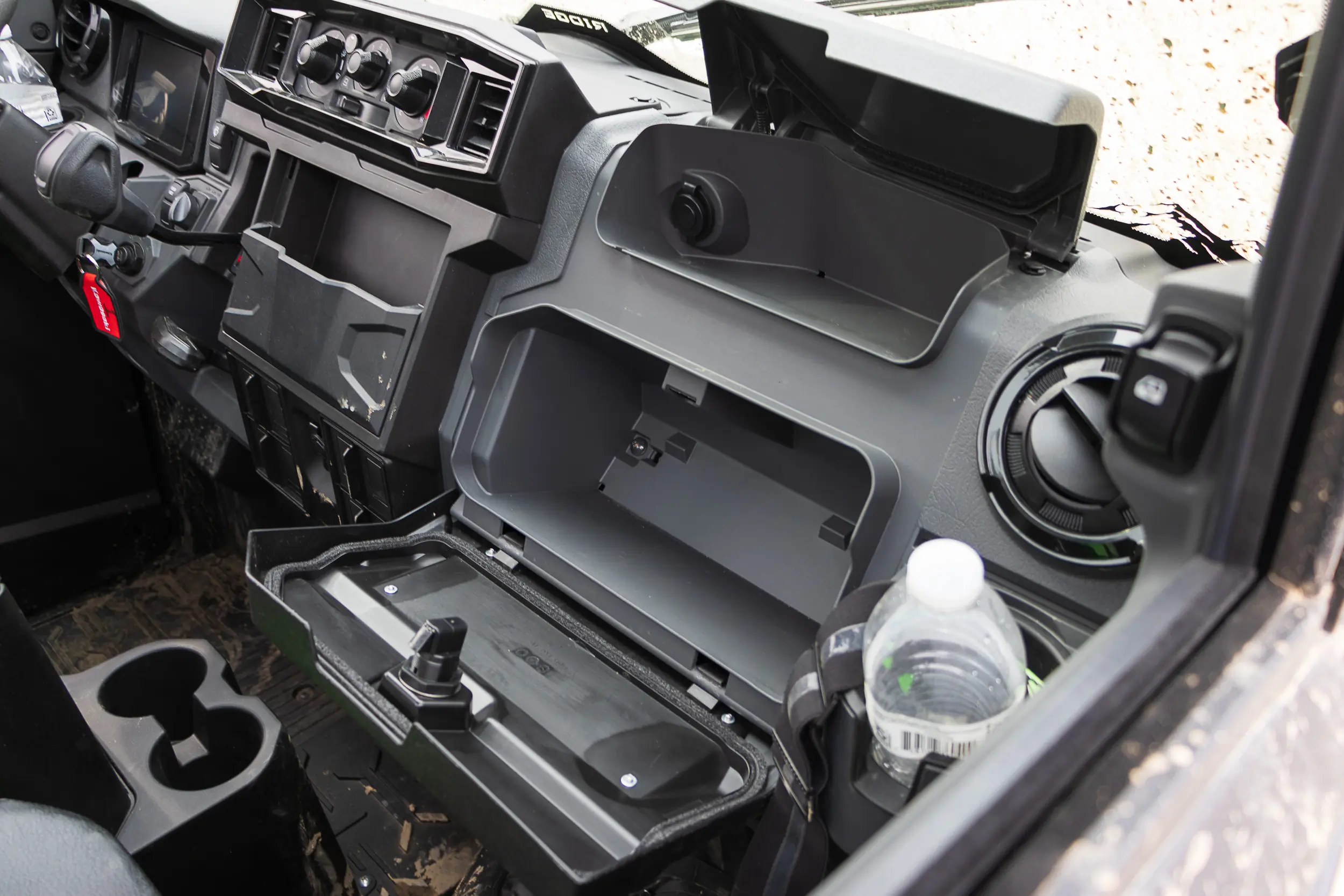



All Ridge models get a fully digital 7.0-inch dash display. The screen can be set to three different gauge layouts, and it’s easy to see in all lights. The system includes automatic brightness adjustment for when you’re dealing with changing lighting conditions.
Ridge Limited adds an 8.0-inch Garmin Tread system in the center position. It offers GPS mapping, audio control through Bluetooth, and the ability to run group rides. The system is integrated into the unit, not just tacked on, so it gives you more dash displays, including temperature, voltage, and tach displays.
Though it wasn’t available to try during my review, Ridge will come with a new app. Rideology the App Powersports is a free app that includes trip planning and mapping. It also lets you check your ride’s odometer, fuel levels, and other information while letting you log and store maintenance records.
Kawasaki Ridge Pricing Starts at $24K
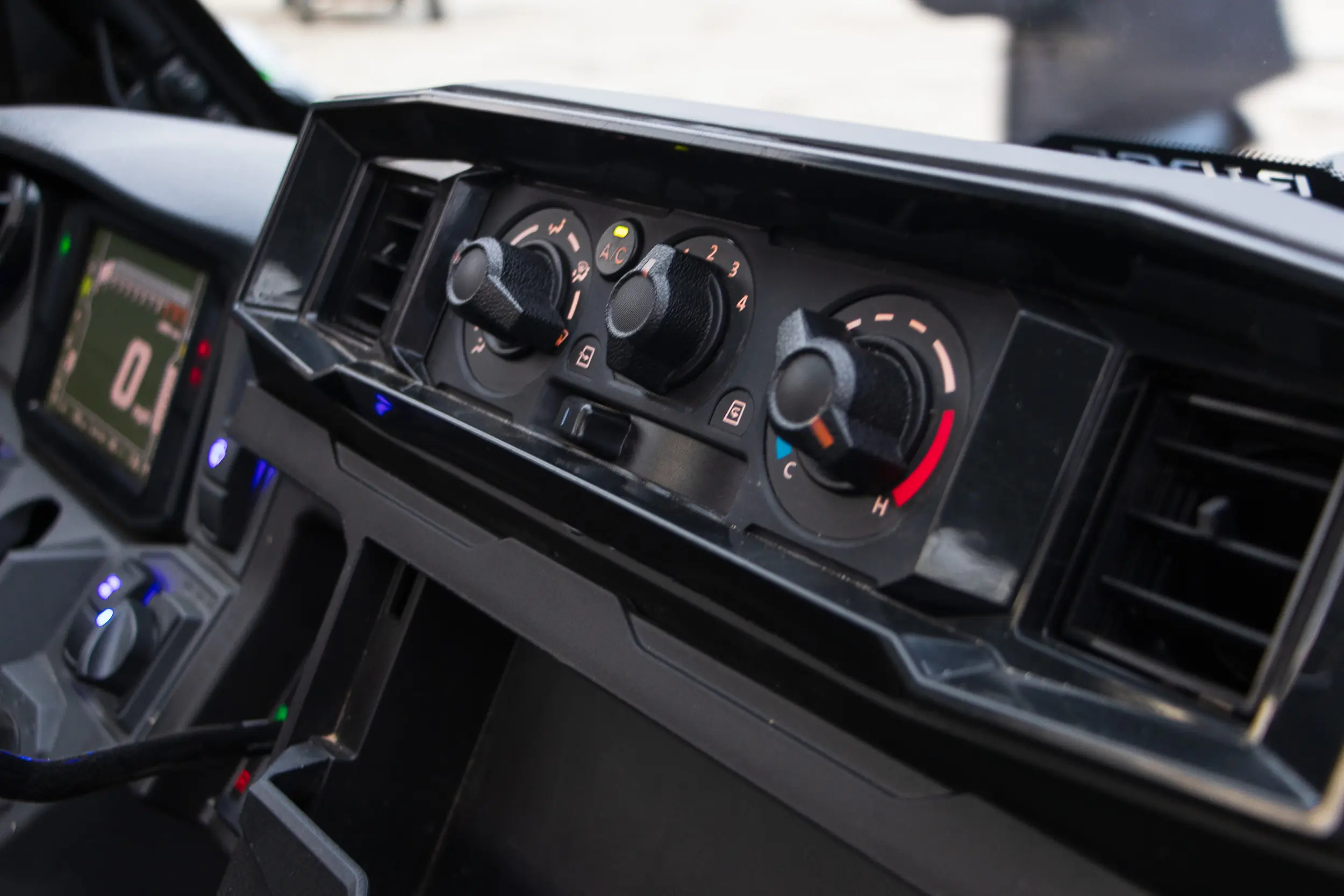



Kawasaki will offer a wide range of Ridge models, starting with the $23,999 Ranch Edition. That one’s the cheapest, but it also might not make much sense. It has the four-cylinder, but it has half-doors, no HVAC, and no glass, though you do get a Warn winch.
To get the full cabin, you’ll need to step up to the $29,999 Ridge HVAC trim. That one comes with all the essentials, including a wiper. The Limited at $33,499 comes with a winch, the Garmin Tread system, a stereo, and cooler bumpers.
A Ridge XR HVAC starts from $31,999 and gets the full cab and more powerful engine. It includes Kawasaki green suspension arms and 30-inch-tall tires.
There will be more than 50 accessories from launch, including plows, storage solutions, rock rails, and exterior mirrors. Kawasaki will also sell other door and windshield options including prop-open windshields, plastic ones, and even half screens as well as half doors.
Sealed Cabin & HVAC the Main Draw
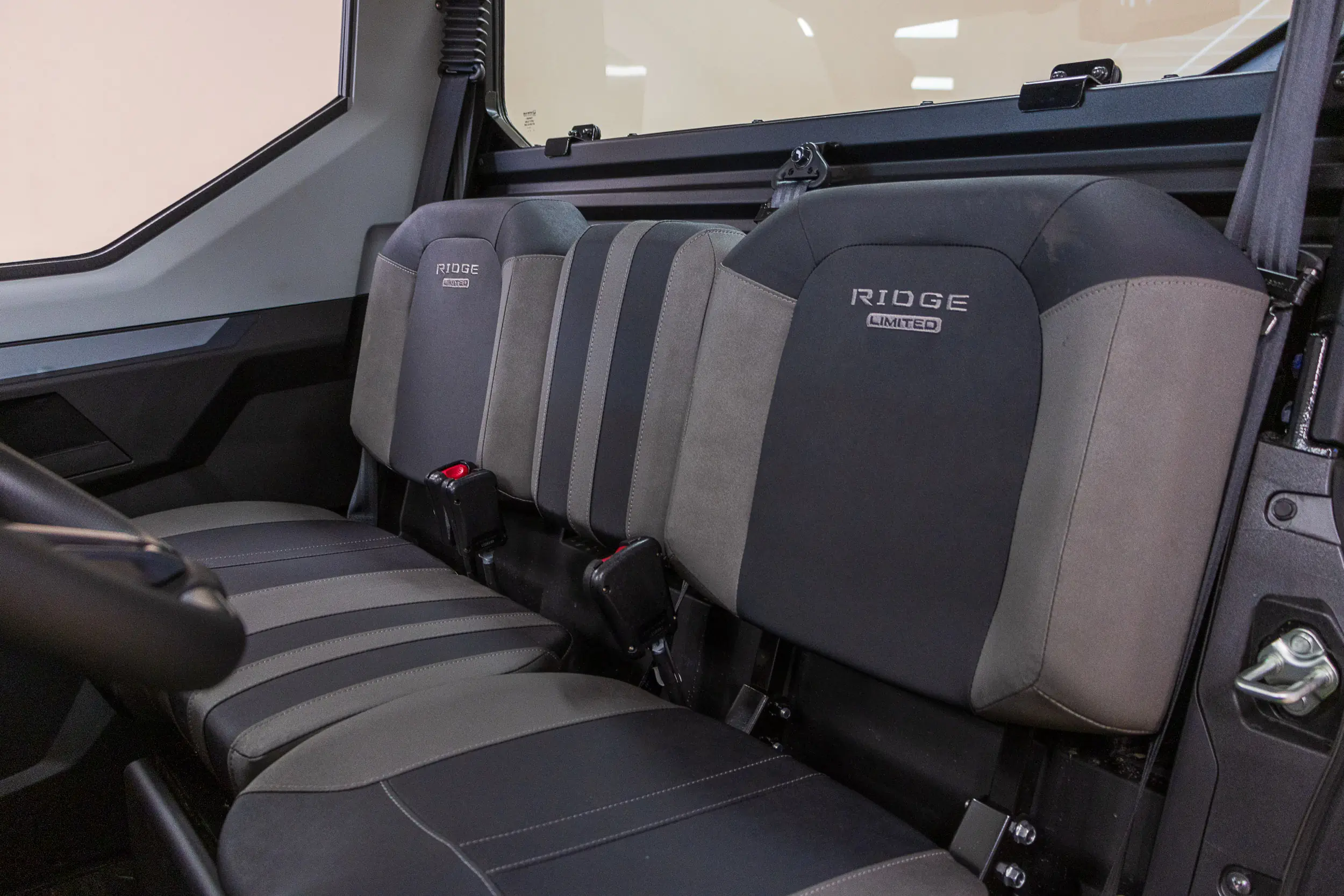



Because the cabin is sort of the point, Kawasaki has spent a lot of time on it. The cabin is very well sealed, with the ROPS system designed to make sure it stays tight. Kawasaki also added a cabin air filter like you’d find in a truck or SUV to keep the dust outside where it belongs.
After a full morning of riding on wet and muddy trails, the top of the roof was wet, but my floorboards were dry. My glasses and interior screens were dust-free at the end of an afternoon on dustier trails as well, another big perk.
The cabin has automotive-style laminated glass for the front windshield, and the side windows are tempered panes, both details like your truck. The side windows are even power-adjusted — one more reason why I had thought the Ridge would blend the line with a Jeep Wrangler.
But no amount of automotive-style (Kawasaki’s words) cabin design and no level of four-cylinder smoothness can make up for construction. That’s where the Ridge falls behind on refinement.
Rafter of Turkeys Inside
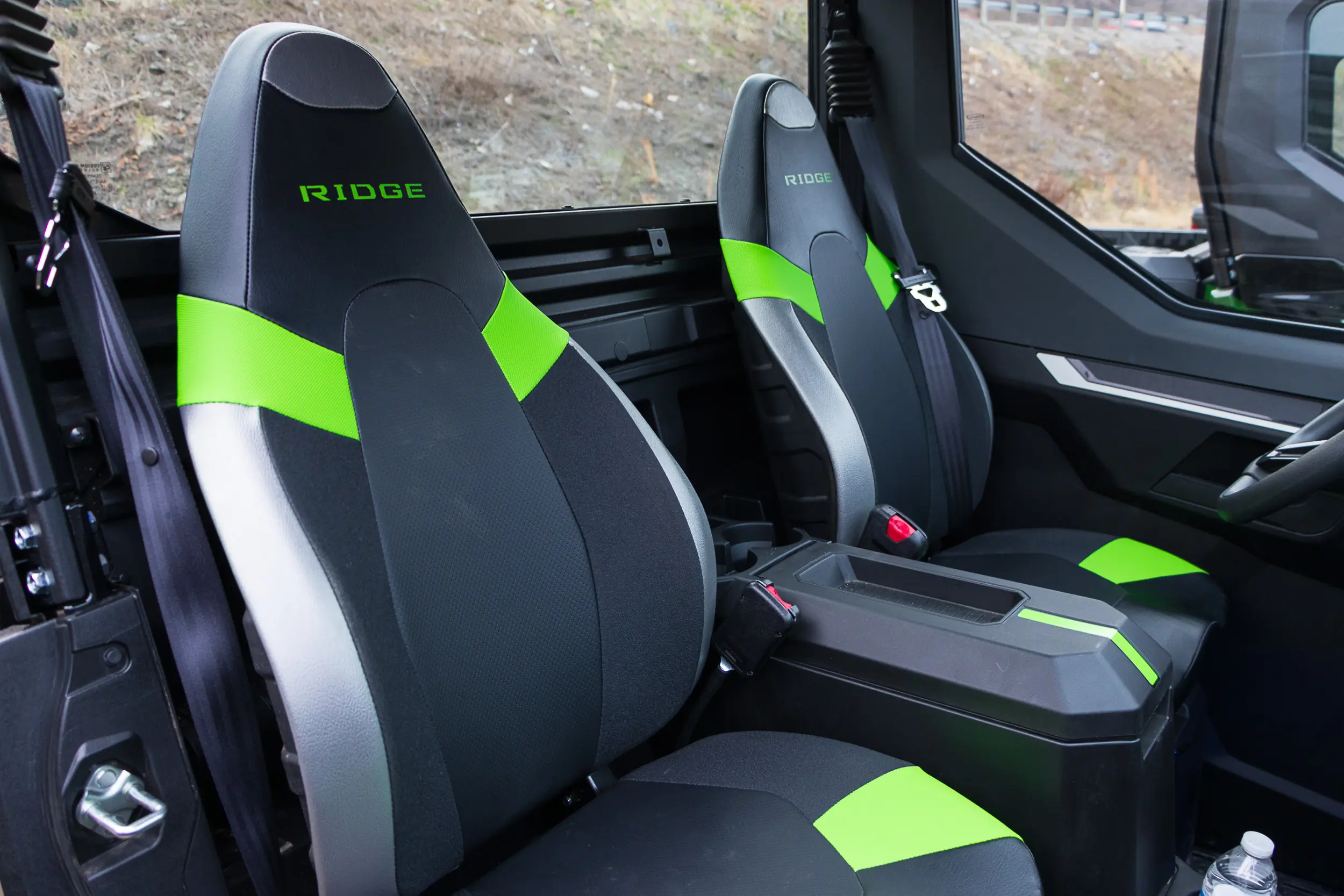



The particular squeak from the Ridge’s cabin and body flexing is like nothing else I’ve heard in a vehicle, off-road or on. When the terrain turned rough, I felt like I was on a poultry farm, surrounded by an incessant sound of turkeys gobbling.
Such a strange and pervasive sound might be acceptable in the sportier XR, but it certainly isn’t in anything that calls itself a luxury ride. The Limited was slightly less noisy, but the gobble-gobble noise was still always there. It was just hiding behind the stock four-speaker audio system.
Despite the gobble, the low levels of vibration and engine noise make in-cabin conversation possible in a way that is simply not in most other UTVs. I didn’t have to yell to talk with my passenger, though we were speaking a bit more loudly than normal.
It’s not quiet, and you’re still going to want to bring hearing protection, especially for longer day rides. But when the plugs are in, this is a calmer place to sit than most of its competitors. You might not be taking many longer rides, though. Certainly not multiday rides. That speaks to the Kawasaki Ridge’s real market targets.
Upright Driving Position
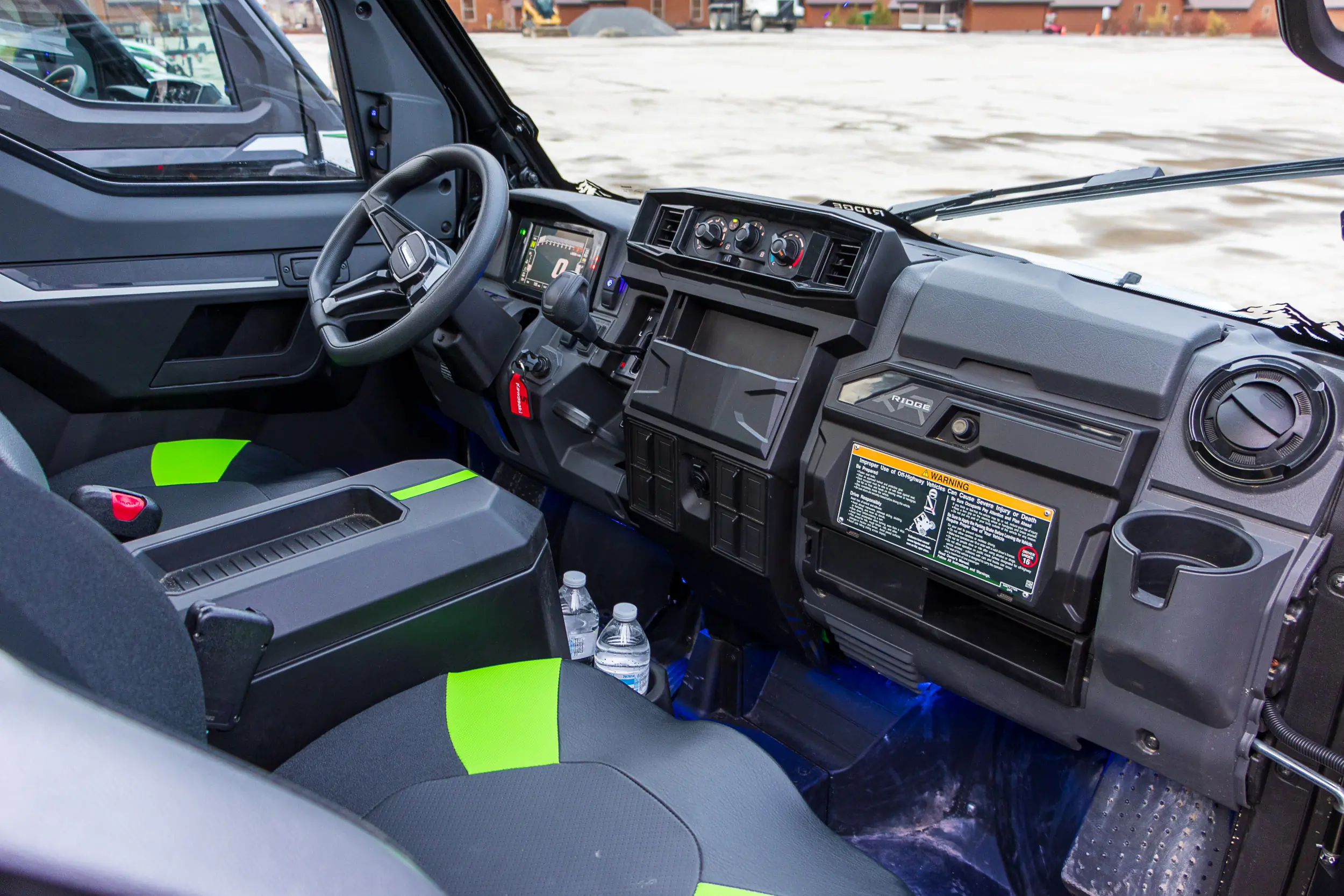



The driving position is so upright that I felt like I was in a UPS truck, and you can’t have fun in a UPS truck when your workday is done. In order to comfortably steer, I needed to have the steering wheel tilted to almost completely flat, which isn’t exactly comfortable or conducive to a fun day of riding.
In the XR, with its bucket-style seats, I found the cabin incredibly cramped. Days later, my knee still wears the bruise left by the driver-side cup holder. The gas pedal was almost straight down, putting my foot under my backside, which was again very uncomfortable.
Move to the Limited model, and I found the split-bench seat more comfortable. It was thinner, so more against the rear wall. The change allowed for more legroom and a less bus-like driving position, though I was still suffering after more than an hour of riding.
If you’re shorter, as in well under 6 feet, it’s better. At least, that’s what the other riders on the trip told me. But they all agreed that this was a workhorse driving position, not one meant for comfort.
The upside of that is that it’s extremely easy to slide in and out, especially in the Limited. The huge door opening is flush with the floorboards, making hopping in and out over and over extremely easy. As I said, it’s a workhorse.
Controlled, Comfortable Ride
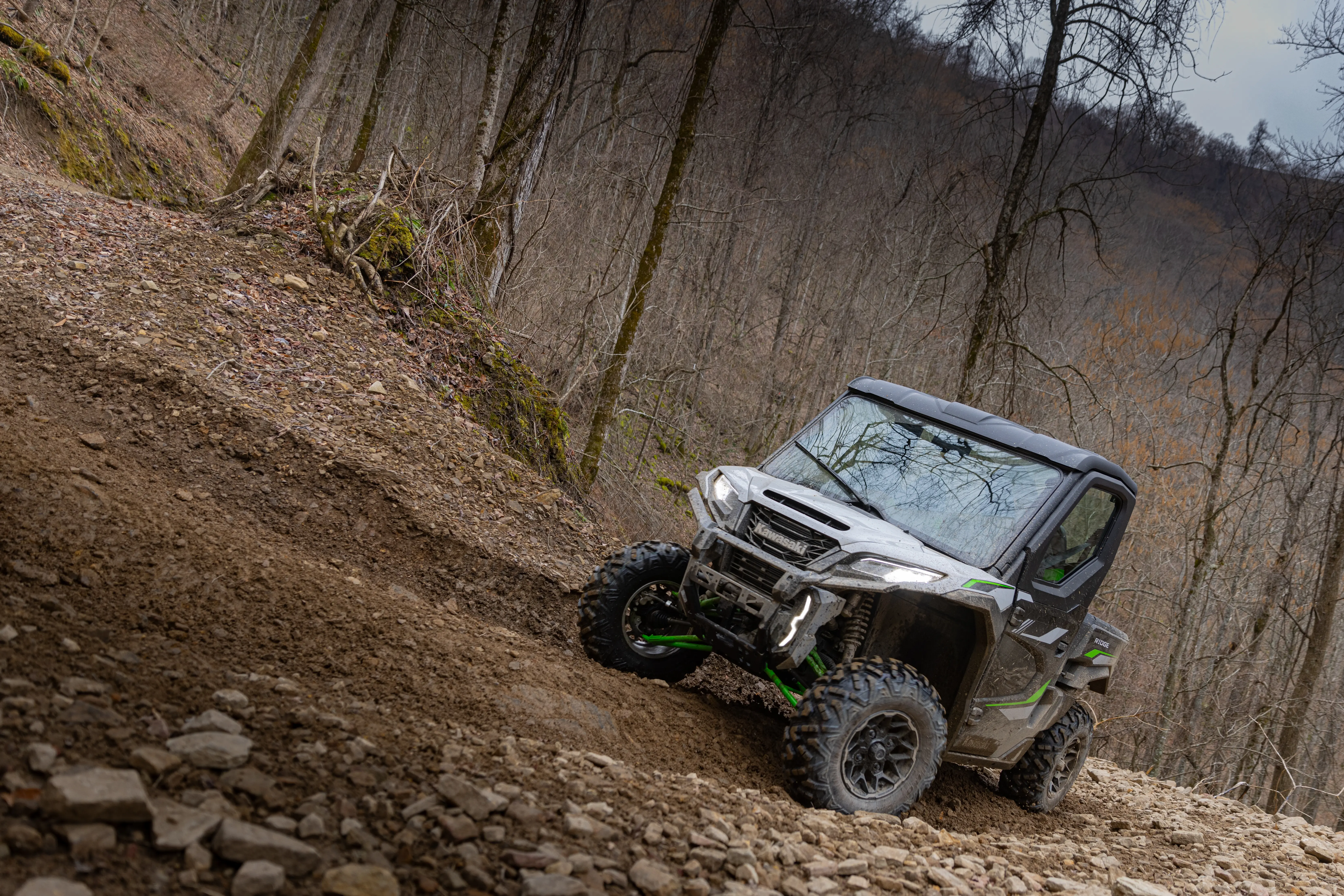



Once you’re in and settled, both versions of the Ridge have a comfortable ride. There’s nothing fancy here: basic shocks with 12.7 inches of suspension travel and adjustable preload at both ends. Still, the dampers on both soak up terrain well, and the Ridge feels stable at low and high speeds on the trail.
The Ridge XR gets an extra inch of ground clearance, for a total of 14 inches instead of the standard’s 13. The height comes from the 30-inch tall tires instead of the 27s on the standard model, rather than any more in-depth mechanical changes.
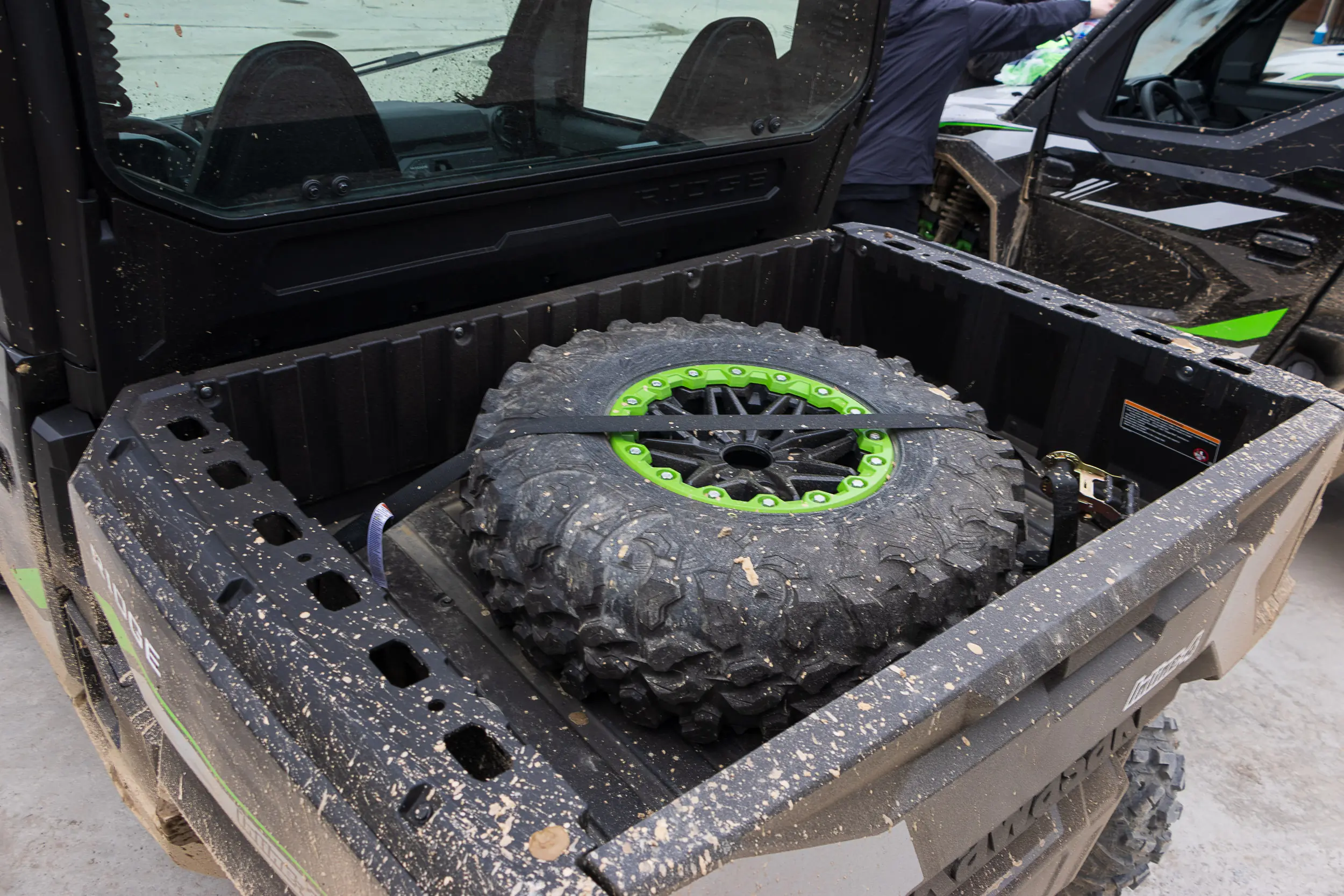



Both models boast a 1,000-pound payload (600 pounds in California) and come with a Class II hitch that’s good for 2,500 pounds. I didn’t get to test the Ridge with a heavy payload, but as I’ve said in the past, I’m a fairly hefty payload all on my own.
The Ridge, both standard and XR, are the first UTVs I’ve driven where I didn’t bottom the suspension with regularity. I also didn’t grind the full-coverage HDPE skid plates on taller ruts, something I often experience even when nobody else on the trip does. Both bode well for handling when the Ridge is working and hauling cargo.
2024 Kawasaki Ridge Review: Conclusion




It’s likely that the Kawasaki Ridge will be put to work. The Ridge reminds me of the pickup trucks of the late 1990s and early 2000s. Back then, automakers were just beginning to learn that buyers who needed to do heavy work with their vehicles weren’t happy with doing that work in a basic-spec vehicle.
It’s the time when General Motors started experimenting with Escalade and what would become the Denali brand and when Ford would launch its King Ranch trucks. They could do the hard work, but they were much nicer places to spend your days. And, crucially, your weekends and time off.
The Ridge is no King Ranch, but it’s worlds away from the basic specs of more traditional work models. UTVs like the Polaris Ranger XP Northstar and top-spec Can-Am Defender Max models have already brought the work market features like factory cabs and air conditioning, so the real advantage here is the four-cylinder engine.
It shows a commitment to vehicle refinement and a more truck-like experience that extends into the rest of the cabin. If you’re yearning to make those long hours of work more comfortable and be able to have some fun off the clock, the Ridge is well worth a look.
The 2024 Ridge and Ridge XR are on sale now, but it will be until summer before all of the models are available.
